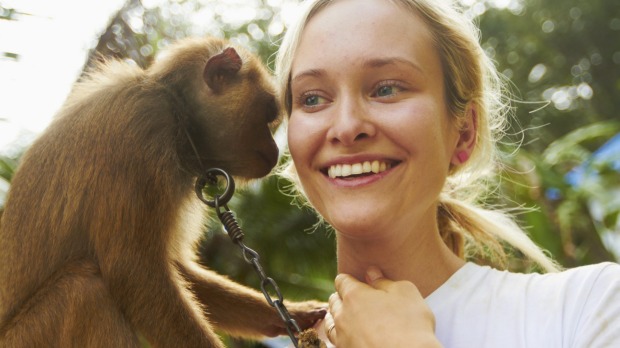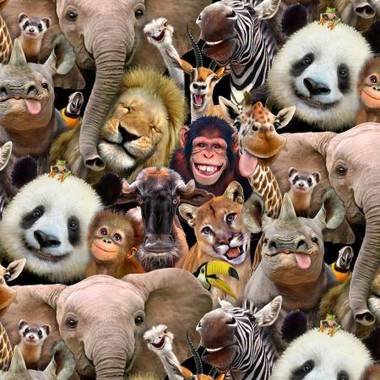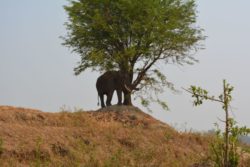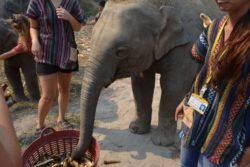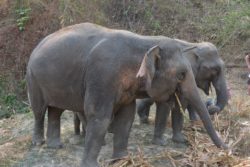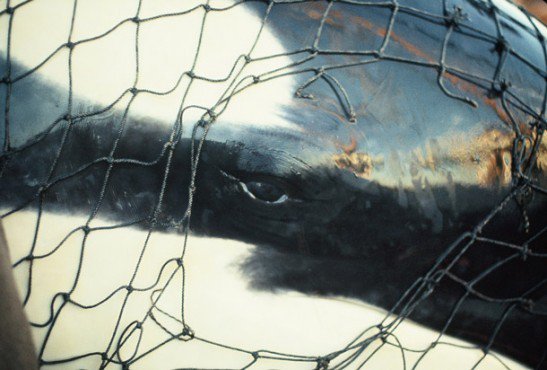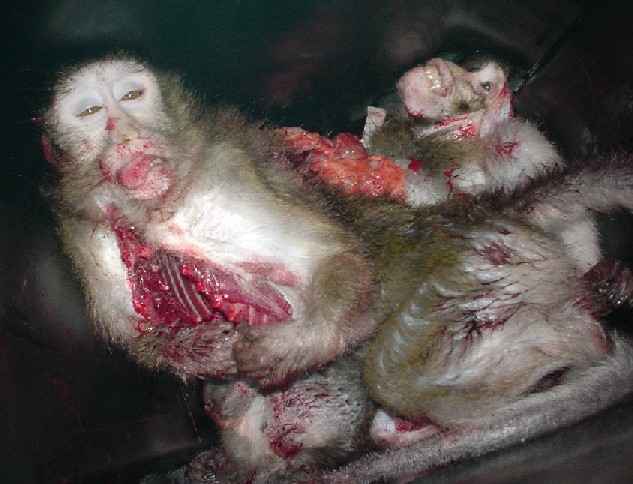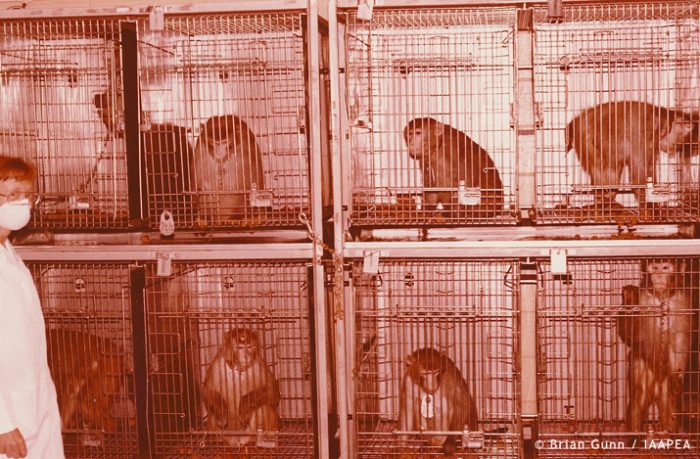Zoos And Safari Parks
Zoos and Safari Parks can be called referred to as a number of different names, including Animal Parks, Wildlife Parks, and Farm Parks. They are businesses that hold animals captive for the public to view.
Animals – often wild animals – are imprisoned in unnatural environments where they are unable to roam for miles and perform natural behaviour. This causes them suffering in itself. No matter how much the establishment may claim they enrich their environments, it can never be to a good standard compared to the wild.
People think that wild animals in such places were born in captivity, but this is often not the case. Babies are stolen from their mothers in the wild. The babies families try to protect them and this can result in the injuring or death of the families. Even if the animal attractions believe they are purchasing animals bred in captivity, they are often actually buying wild animals stolen from the wild, provided by the black market.
The public think that if such places have excess animals that they wish to be relieved of, they send them to other attractions. This is often not the case. Even if they try to find attractions that can take the animal, they may not find any. Some do not even try. It is less effort and cheaper for them to simply shoot the excess animals away from public sight.
This was exposed as a regular occurrence at Knowsley Safari Park, in Merseyside in the UK. The park photographer, Penny Boyd, bravely took photographs of the dead animals as evidence and went on television to expose what went on out of public view at the park.
Image: Knowsely Safari Park, near Liverpool, UK

She reported that not only were the animals shot, but that they had been shot by staff not trained for the task, causing the animals to die in agony after needing shot a number of times. The animal park denied it all and attempted to discredit her. She was very brave to blow the whistle on what was happening. As with most businesses, profit came first, before animals lives.
Image: Baboon killed by Knowsley safari Park, photographed by whistle blower Penny Boyd. Source
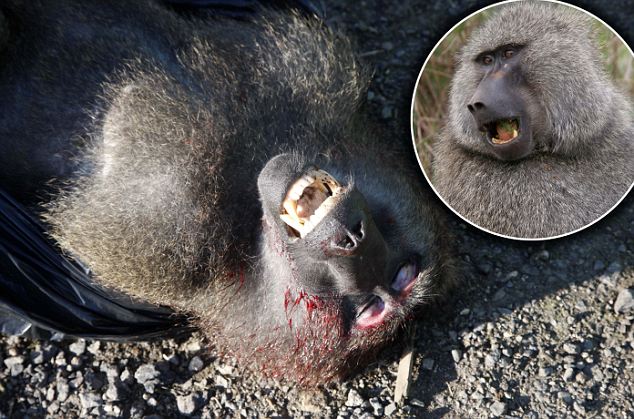
Knowsley Safari Park is owned by the Earl of Derby, and claims to be ‘especially concerned with the welfare of our animals’, as all businesses that exploit animals claim. The park has around 500,000 visitors each year.
General manager David Ross said ‘In a park with almost 800 animals, some such deaths are inevitable.’
The photographer, Miss Boyd, said she was horrified by the treatment of those which were no longer wanted.
‘One morning I heard a gunshot and looked out to see a beautiful antelope I’d known for years being downed,’ she recalled. ‘Another two shots were needed before it was dead.
‘That kind of job should only be done by experienced people.’
She said she found the scenes of excess animals that were killed soul destroying.
The photographer said that she accepted that at times culling of excess animals had to be done. This is the case in all animal tourist attractions when the animals are surplus to requirements. But she stated ‘It was despicable. I couldn’t carry on producing cute pictures to get Knowsley positive publicity knowing some of the animals might be culled and dumped to rot the next day.’
Despite these events, The British and Irish Association of Zoos and Aquariums last night said it had ‘full confidence’ in Knowsley Safari Park and praised its ‘excellent standards of animal husbandry and welfare’.
That just shows that these events are accepted as part and parcel of exploiting animals for profit.
Image: Culled deer, photograph taken by Penny Boyd.

Whilst most animal tourism attractions manage to keep practices the public would not like quiet, South Lakes Safari Zoo (formerly South Lakes Wild Animal Park) in Cumbria, UK, is another case of it being exposed to the public.
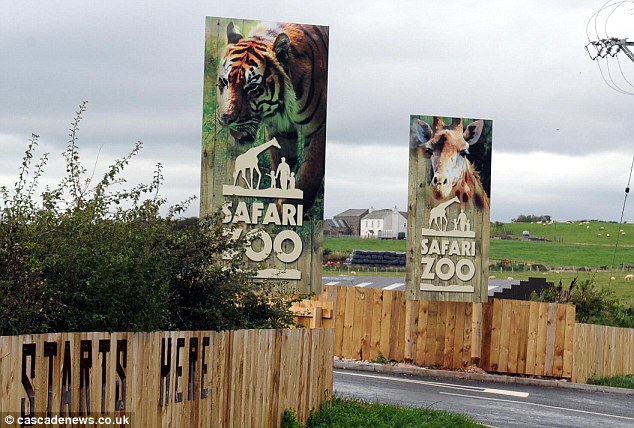
In 2017 , inspectors found that the adequate care of animals had been neglected to the point where more than 500 animals died in less than four years. The zoo was closed when millionaire founder David Gill was refused a new licence. The zoo was subsequently allowed to re-open under new management.
Image: Millionaire founder David Gill was blamed for high rate of deaths of of South Lakes Safari Zoo, which has 250,000 visitors a year.

Poor management, emaciation and hypothermia were among the reasons for the mortality rate. An additional cause was enclosures being too full, causing trauma and infighting.
National campaigning charity the Captive Animal Protection Society (CAPS) said that the injuries and illnesses endured by a wide range of species at the site over the four year period are some of the worst they have seen in 60 years.
Some animals were killed as a form of population control . Seven healthy lion cubs were killed at four days old because the safari zoo did not have room for them. In addition, 18 sacred ibis birds were shot by founder David Gill after he was threatened with prosecution for allowing the non-native species to fly free from the zoo.
An African spurred tortoise named Goliath was electrocuted when it became stuck in charged fencing, while the decomposed body of a squirrel monkey was discovered behind a radiator.
The Park lost two giraffes in the space of nine months with the first, a 13-day-old bull, dying of a gastrointestinal infection thought to be E coli.
A second, an eight-year-old male, was shot in July last year after it collapsed. The vet who carried out a post mortem on the animal raised concerns over the nutrition of the giraffe herd, as its bodily condition was found to be similar to others that had been unwell or died.
Image: Vets found dead giraffes at South Lakes Safari Zoo to be emaciated. This one was photographed with a bleeding ear wound by a visitor.

There was the sudden death of two snow leopards; Miska and Natasja, in October 2015 after they were discovered partially eaten in their enclosure. Their causes of death were never established.
A jaguar named Saka was euthanised after it chewed off its own paw.
A tiger responsible for the death of a keeper in 2013 was euthanised on the orders of zoo founder David Gill. Padang, a 14-year-old Sumatran tiger, was “culled” on March 22 last year – three years after its fatal attack on 24-year-old staff member Sarah McClay.
Alicia, a Sumatran tiger, was found dead in her enclosure just a few months later, after a member of the public reported seeing her choking. A post mortem report concluded she had eaten a piece of meat too large to be swallowed, causing a piece to be inhaled into her larynx.
Image: The zoo was also accused of covering up the death of a baby tiger. Source

There have been a series of animal escapes, including a three tonne rhino which marauded the streets of Dalton in 1997 and was shot as a result.
Zoo inspectors felt that founder, David Gill, caused unnecessary suffering to animals. They concluded that animals kept in areas managed by site owner David Gill were beset with significant problems that had led directly to the deaths of a number of the “exhibits”.
Indiana, a three-year-old white rhino, died after being crushed against a barrier by another rhino.
Image: Indiana, the three year old white Rhino crushed to death at South Lakes Safari Park, as a baby.

The inspectors called deaths and injuries suffered by animals kept in the Tambopata aviary, tropical house and the old lemur houses “appalling and shocking”
The inspectors stated “The conditions that these animals are being maintained in is, quite frankly, appalling and shocking, and has led directly to the death of a number of them.
The inspectors found the areas in question had too many animals for the enclosures available with non-compatible species sharing living space.
In one month alone, seven Parma Wallabies, a Spix’s Guan and a Lady Amherst’s Pheasant all died with one part time keeper, who was responsible for 170 animals. She admitted she was told to dispose of any further bodies and “not to tell anyone'”.
One wallaby kept in the area, which is now off show to the public, was found to have injuries to its tail consistent with being bitten by rats while still alive.
These are just some examples of the deaths that occurred. The inspectors said they believed Mr Gill showed a “callous disregard” for the welfare of the animals.
Image: A photo of an emaciated kangaroo was taken by a member of the public and included in the report. Source

Sadly, the above examples of zoos and animal parks causing suffering to animals are not exceptions to the rule. If the attraction is a business, then they put profits above animal welfare (despite what they say), and animal suffering occurs. People who go to these attractions fund the suffering.
Zoos or animal parks in certain countries in Asia have been known to kill animals such as tigers and sell their valuable parts to the Chinese Medicine market, if that is more profitable than keeping them.
Others have been documented using surplus animals as live food for other animals.
Ad:
Return To Table Of Contents


